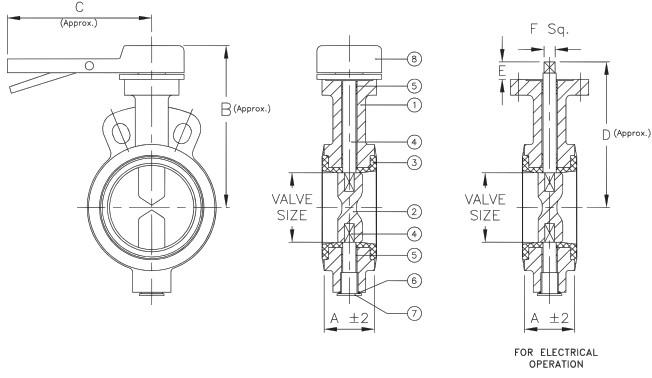China Wafer Type Butterfly Valve Provider DVS Supplies Cast Steel Wafer Butterfly Valve, 2 Inch, Class 300, Lever Operation, for Air, Water, Steam and Gases.
Payment:
30% when order confirmed, 70% before shipmentProduct Origin:
ChinaColor:
CustomizationShipping Port:
Shanghai, ChinaLead Time:
30~60 days Ex Works after order confirmationMaterial:
Cast SteelMethod of Operation:
LeverButterfly Valves can be used for special applications like isolation, throttling and control. Butterfly Valves are suitable for fluids like air, water, steam, gases, etc.
Quick Details
|
Type |
Butterfly Valve |
|
Nominal Diameter |
2 Inch |
|
NominalPressure |
300LB |
|
Construction |
Concentric Structure |
|
Connection |
Wafer Type |
|
Design & Manufacture |
API609 |
|
End to End Dimension |
ASME B16.10. |
|
Test & Inspection |
API 598. |
|
Body Material |
Cast Steel. |
|
Temp. Range |
-15~120°C |
|
Media |
air, water, steam, gases, etc |
Technical Drawing

DVS Service
A good customer service is as valuable as product itself. In Dervos, we will offer a full range of customer service to make you feel easy when doing business with us.
Providing weekly production report
When production begins, you will get production report weekly, so that you can have good command of product status and report to your customer at the meantime.
Offering warranty of 18 months
18 months warranty period will be offered after shipment, no concern to purchase valve from Dervos.
Providing solutions within 3-days for complaints
All the complaints will be solved within 3 days, in this case, you can timely reply and solve problems for your customer, to relax them even when complaints happening.
If you are interested in our products and want to know more details,please leave a message here,we will reply you as soon as we can.